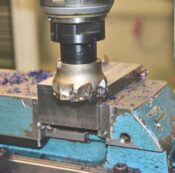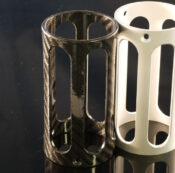CNC Turning is the process of shaping materials using either computer numerical control (CNC) or a manual lathe, which is the more traditional turning process. This blog will look at the advantages and uses of the CNC turning process.
What is CNC Turning used for?
CNC turning is used in a number of ways to shape material for the manufacture of precision components. Generally, CNC turning involves rotating a part while a single-point cutting tool is moved parallel to the axis of rotation, thus shaping the material.
As the name would suggest, the cutting tool is worked while the material remains fixed in place. Therefore, CNC turning is used to describe the shaping of external surfaces. The term ‘boring’ is used in reference to shaping internal areas of materials, such as holes.
Facing is also another operation used in CNC turning. Facing involves cutting a flat surface perpendicular to the material’s rotational axis.
Grooving, another process used in conjunction with CNC turning, involves cutting a specific depth into external or internal surfaces of the material without severing the complete/part-complete component.
There are multiple operations more including: parting, drilling, knurling, reaming, and threading. But all these CNC turning processes involve shaping the material and reducing its diameter to a specific dimension, producing a smooth precision part finish.
Advantages of CNC Turning
There are many advantages of CNC turning including:
- Increased production speed and efficiency
- It’s cost-effective
- Increased precision of manufactured parts
- Reduced waste
In the modern engineering world, most lathes are computer controlled. Using CNC, a programmed code that instructs CNC turning machines to turn and cut as accurately as they do, CNC turning machines are able to precisely manufacture components in varying quantities.
What do lathes produce?
In an engineering factory, like ours, CNC lathes are ideal for manufacturing highly detailed and complex components which can be utilised in many different industries.
With the detail and functionality available within CAD software systems, combined with the precision and ability of CNC lathes, our CNC turning machines can produce virtually any shape or form of components required!
Watch our CNC Turn video below:









